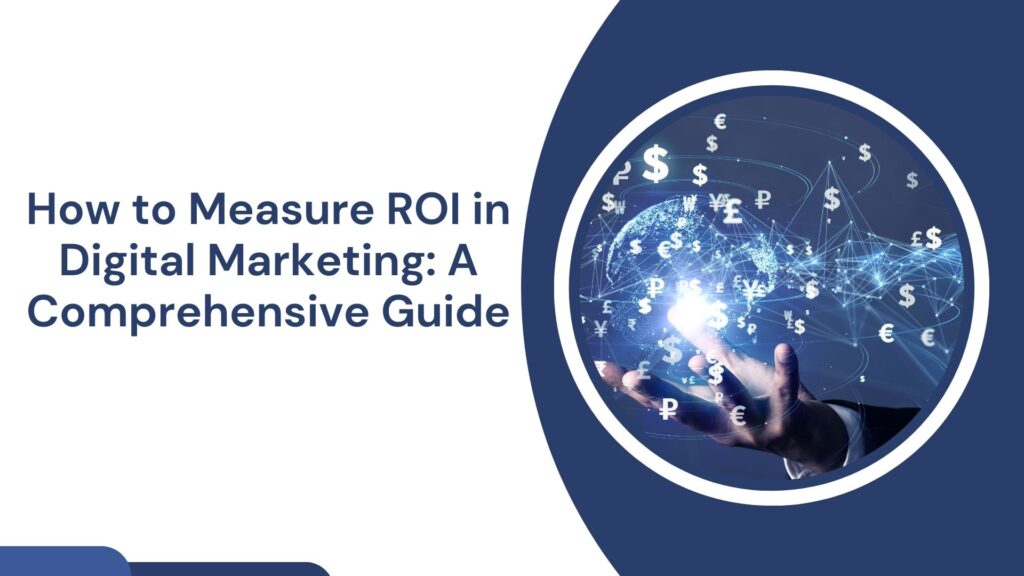In today’s fast-paced digital landscape, businesses allocate significant portions of their budgets to digital marketing channels—search engine marketing (SEM), social media, content marketing, email campaigns, and more. However, without a clear understanding of how to measure return on investment (ROI), even the most creative campaigns may fall short of proving their value. ROI measurement is essential not only for justifying expenses but also for optimizing future strategies. In this article, we’ll explore what digital marketing ROI is, why it matters, how to calculate it, and the tools and metrics that help marketers assess performance effectively.
What Is ROI in Digital Marketing?
Return on Investment (ROI) in digital marketing refers to the profitability generated from marketing activities compared to the costs incurred. It answers a fundamental question: Is your marketing spend generating meaningful returns for your business?
At its core, the formula for ROI is:
ROI (%) = [(Revenue from marketing – Cost of marketing) / Cost of marketing] x 100
For example, if you spend $5,000 on a Google Ads campaign and generate $15,000 in sales, your ROI would be:
[(15,000 – 5,000) / 5,000] x 100 = 200%
Why Measuring ROI Is Crucial
- Budget Justification: Management and stakeholders want to see tangible results. A clear ROI helps justify current and future investments in marketing.
- Campaign Optimization: By understanding what delivers the highest return, marketers can reallocate budgets to high-performing channels.
- Strategic Planning: ROI insights contribute to long-term planning and help align marketing objectives with overall business goals.
- Improved Accountability: Teams can be held accountable for their efforts when measurable outcomes are tied to specific actions.
Step-by-Step Guide to Measuring Digital Marketing ROI
Step 1: Set Clear Goals
Before launching any campaign, define what success looks like. This could be:
- Increasing sales
- Generating leads
- Boosting website traffic
- Enhancing brand awareness
Each goal will have different key performance indicators (KPIs).
Step 2: Track Campaign Costs
Include all associated costs such as:
- Ad spend
- Content creation
- Software tools (email platforms, CRM, etc.)
- Agency fees or in-house salaries
Step 3: Attribute Revenue Accurately
Use attribution models to determine how each marketing effort contributes to a sale:
- First-touch: Gives credit to the first interaction.
- Last-touch: Credits the final interaction before conversion.
- Multi-touch: Distributes value across multiple touchpoints.
Step 4: Use Analytics Tools
Leverage tools like:
- Google Analytics: For tracking web performance, source traffic, and conversions.
- CRM Systems: For tracking customer journeys and revenue generation.
- Social Media Insights: For monitoring engagement and conversions.
- Marketing Automation Platforms: To evaluate campaign performance in detail.
Step 5: Analyze and Optimize
Regularly evaluate performance. Compare your actual ROI to benchmarks and previous campaigns. Look for areas to:
- Reduce costs
- Improve targeting
- Optimize creative content
- Adjust bidding strategies
Challenges in Measuring ROI
Attribution Complexity
A customer might click a Google ad, read a blog post, and then convert through an email—all in one journey. Identifying the true source of conversion can be complex.
Long Sales Cycles
In industries like B2B or real estate, sales cycles can take months, making it difficult to link immediate marketing efforts to final sales.
Intangible Benefits
Some benefits, like brand awareness or customer trust, aren’t directly measurable but contribute significantly to ROI over time.
Data Silos
Fragmented systems can prevent unified tracking. Integration of tools and platforms is necessary for holistic ROI measurement.
Tips for Improving Digital Marketing ROI
- Focus on High-Performing Channels: Use A/B testing to determine what works best.
- Retargeting Campaigns: Re-engage past visitors with tailored messages.
- Segment Your Audience: Personalize campaigns based on demographics, behaviors, or past interactions.
- Invest in Content Marketing: Evergreen content can generate returns long after the initial investment.
- Refine SEO Strategies: Organic traffic delivers consistent returns over time.
Conclusion
Measuring ROI in digital marketing isn’t just about proving that your strategies work—it’s about learning, adapting, and driving better business outcomes. With clearly defined goals, the right tools, and continuous optimization, marketers can turn data into actionable insights and ensure that every dollar spent moves the business forward.
Understanding and calculating ROI should be an ongoing part of your marketing strategy, not a one-time task. As competition grows and consumer behaviors evolve, your ability to quantify and maximize ROI will be the key differentiator in achieving sustainable growth.


